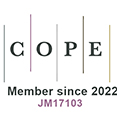REFERENCES
1. Cohen L, Lipton ZC, Mansour Y. Efficient candidate screening under multiple tests and implications for fairness. arXiv preprint arXiv: 190511361 2019.
2. Schumann C, Foster J, Mattei N, Dickerson J. We need fairness and explainability in algorithmic hiring. In: International Conference on Autonomous Agents and Multi-Agent Systems; 2020. pp. 1716-20.
3. Mukerjee A, Biswas R, Deb K, Mathur AP. Multi-objective evolutionary algorithms for the risk-return trade-off in bank loan management. Int Trans Operational Res 2002;9:583-97.
4. Lee MSA, Floridi L. Algorithmic fairness in mortgage lending: from absolute conditions to relational trade-offs. Minds and Machines 2021;31:165-91.
6. Berk R, Heidari H, Jabbari S, Kearns M, Roth A. Fairness in criminal justice risk assessments: The state of the art. Sociological Methods & Research 2021;50:3-44.
7. Chouldechova A. Fair prediction with disparate impact: A study of bias in recidivism prediction instruments. Big Data 2017;5:153-63.
8. Dwork C, Hardt M, Pitassi T, Reingold O, Zemel R. Fairness through awareness. In: Proceedings of the Innovations in Theoretical Computer Science Conference; 2012. pp. 214-26.
9. Hardt M, Price E, Srebro N. Equality of opportunity in supervised learning. In: Advances in Neural Information Processing Systems; 2016. pp. 3315-23.
10. Pearl J. Causality: models, reasoning and inference New York, NY, USA: Cambridge University Press; 2009.
11. Kusner MJ, Loftus J, Russell C, Silva R. Counterfactual fairness. In: Advances in Neural Information Processing Systems; 2017. pp. 4069-79.
12. Russell C, Kusner MJ, Loftus J, Silva R. When worlds collide: integrating different counterfactual assumptions in fairness. In: Advances in Neural Information Processing Systems; 2017. pp. 6414-23.
13. Pan W, Cui S, Bian J, Zhang C, Wang F. Explaining algorithmic fairness through fairness-aware causal path decomposition. In: ACM SIGKDD International Conference on Knowledge Discovery and Data Mining; 2021. pp. 1287-97.
14. Grabowicz PA, Perello N, Mishra A. Marrying fairness and explainability in supervised learning. In: ACM Conference on Fairness, Accountability, and Transparency; 2022. pp. 1905-16.
15. Shpitser I, Pearl J. Complete identification methods for the causal hierarchy. J Mach Learn Res 2008;9:1941-79.
16. Caton S, Haas C. Fairness in machine learning: A survey. arXiv preprint arXiv: 201004053 2020. Available from: https://arxiv.org/abs/2010.04053.
17. Du M, Yang F, Zou N, Hu X. Fairness in deep learning: a computational perspective. IEEE Intell Syst 2020;36:25-34.
18. Mehrabi N, Morstatter F, Saxena N, Lerman K, Galstyan A. A survey on bias and fairness in machine learning. ACM Comput Surv 2021;54:1-35.
20. Wan M, Zha D, Liu N, Zou N. Modeling techniques for machine learning fairness: a survey. arXiv preprint arXiv: 211103015 2021. Available from: https://arxiv.org/abs/2111.03015.
21. Makhlouf K, Zhioua S, Palamidessi C. On the applicability of machine learning fairness notions. ACM SIGKDD Explorations Newsletter 2021;23:14-23.
22. Makhlouf K, Zhioua S, Palamidessi C. Survey on causal-based machine learning fairness notions. arXiv preprint arXiv: 201009553 2020. Available from: https://arxiv.org/abs/2010.09553.
23. Wu D, Liu J. Involve Humans in Algorithmic Fairness Issue: A Systematic Review. In: International Conference on Information; 2022. pp. 161-76.
24. Zhang J, Bareinboim E. Fairness in decision-making—the causal explanation formula. In: AAAI Conference on Artificial Intelligence. vol. 32; 2018. pp. 2037-45.
26. Zhang L, Wu Y, Wu X. A causal framework for discovering and removing direct and indirect discrimination. In: International Joint Conference on Artificial Intelligence; 2017. pp. 3929-35.
27. Zhang L, Wu Y, Wu X. Causal modeling-based discrimination discovery and removal: Criteria, bounds, and algorithms. IEEE Trans Knowl Data Eng 2018;31:2035-50.
28. Kilbertus N, Rojas-Carulla M, Parascandolo G, et al. Avoiding discrimination through causal reasoning. In: Advances in Neural Information Processing Systems; 2017. pp. 656-66.
29. Zhang L, Wu Y, Wu X. Situation testing-based discrimination discovery: a causal inference approach. In: International Joint Conference on Artificial Intelligence; 2016. pp. 2718-24.
30. Huan W, Wu Y, Zhang L, Wu X. Fairness through equality of effort. In: The Web Conference; 2020. pp. 743-51.
31. Wu Y, Zhang L, Wu X, Tong H. Pc-fairness: a unified framework for measuring causality-based fairness. Advances in Neural Information Processing Systems 2019.
32. Khademi A, Lee S, Foley D, Honavar V. Fairness in algorithmic decision making: an excursion through the lens of causality. In: The Web Conference; 2019. pp. 2907-14.
33. Rubin DB. Estimating causal effects of treatments in randomized and nonrandomized studies. Journal of Educational Psychology 1974;66:688.
34. Splawa-Neyman J, Dabrowska DM, Speed T. On the application of probability theory to agricultural experiments. Essay on principles. Section 9. Statist Sci 1990:465-72.
35. Bendick M. Situation testing for employment discrimination in the United States of America. Horizons stratégiques 2007;5:17-39.
36. Luong BT, Ruggieri S, Turini F. k-NN as an implementation of situation testing for discrimination discovery and prevention. In: ACM SIGKDD International Conference on Knowledge Discovery and Data Mining; 2011. pp. 502-10.
37. Imbens GW, Rubin DB. Causal inference in statistics, social, and biomedical sciences 2015.
38. Zemel R, Wu Y, Swersky K, Pitassi T, Dwork C. Learning fair representations. In: International Conference on Machine Learning; 2013. pp. 325-33.
39. Feldman M, Friedler SA, Moeller J, Scheidegger C, Venkatasubramanian S. Certifying and removing disparate impact. In: proceedings of the ACM SIGKDD International Conference on Knowledge Discovery and Data Mining; 2015. pp. 259-68.
40. Xu D, Wu Y, Yuan S, Zhang L, Wu X. Achieving causal fairness through generative adversarial networks. In: International Joint Conference on Artificial Intelligence; 2019. pp. 1452-58.
41. Kocaoglu M, Snyder C, Dimakis AG, Vishwanath S. CausalGAN: Learning causal implicit generative models with adversarial training. In: International Conference on Learning Representations; 2018.
42. Salimi B, Howe B, Suciu D. Data management for causal algorithmic fairness. IEEE Data Eng Bull 2019: 24-35. Available from: http://sites.computer.org/debull/A19sept/p24.pdf.
43. Salimi B, Rodriguez L, Howe B, Suciu D. Interventional fairness: Causal database repair for algorithmic fairness. In: International Conference on Management of Data; 2019. pp. 793-810.
44. Nabi R, Shpitser I. Fair inference on outcomes. In: AAAI Conference on Artificial Intelligence; 2018.
45. Chiappa S. Path-specific counterfactual fairness. In: AAAI Conference on Artificial Intelligence; 2019. pp. 7801-8.
46. Agarwal A, Beygelzimer A, Dudík M, Langford J, Wallach H. A reductions approach to fair classification. In: International Conference on Machine Learning; 2018. pp. 60-69. [DOI: http://proceedings.mlr.press/v80/agarwal18a.html].
47. Bechavod Y, Ligett K. Learning fair classifiers: a regularization-inspired approach. arXiv preprint arXiv: 170700044 2017. Available from: http://arxiv.org/abs/1707.00044.
48. Kamishima T, Akaho S, Asoh H, Sakuma J. Fairness-aware classifier with prejudice remover regularizer. In: Joint European Conference on Machine Learning and Knowledge Discovery in Databases; 2012. pp. 35-50.
49. Zafar MB, Valera I, Rogriguez MG, Gummadi KP. Fairness constraints: mechanisms for fair classification. In: Artificial Intelligence and Statistics; 2017. pp. 962-70. Available from: http://proceedings.mlr.press/v54/zafar17a.html.
50. Zafar MB, Valera I, Gomez Rodriguez M, Gummadi KP. Fairness beyond disparate treatment and disparate impact: learning classification without disparate mistreatment. In: The Web Conference; 2017. pp. 1171-80.
51. Hu Y, Wu Y, Zhang L, Wu X. Fair multiple decision making through soft interventions. Adv Neu Inf Pro Syst 2020;33:17965-75.
52. Garg S, Perot V, Limtiaco N, et al. Counterfactual fairness in text classification through robustness. In: Proceedings of the AAAI/ACM Conference on AI, Ethics, and Society; 2019. pp. 219-26.
53. Di Stefano PG, Hickey JM, Vasileiou V. Counterfactual fairness: removing direct effects through regularization. arXiv preprint arXiv: 200210774 2020. Available from: https://arxiv.org/abs/2002.10774.
54. Kim H, Shin S, Jang J, et al. Counterfactual fairness with disentangled causal effect variational autoencoder. In: AAAI Conference on Artificial Intelligence; 2021. pp. 8128-36. Available from: https://ojs.aaai.org/index.php/AAAI/article/view/16990.
55. Corbett-Davies S, Pierson E, Feller A, Goel S, Huq A. Algorithmic decision making and the cost of fairness. In: Proceedings of the ACM SIGKDD International Conference on Knowledge Discovery and Data Mining; 2017. pp. 797-806.
56. Dwork C, Immorlica N, Kalai AT, Leiserson M. Decoupled classifiers for group-fair and efficient machine learning. In: International Conference on Fairness, Accountability and Transparency; 2018. pp. 119-33. http://proceedings.mlr.press/v81/dwork18a.html.
57. Wu Y, Zhang L, Wu X. Counterfactual fairness: unidentification, bound and algorithm. In: International Joint Conference on Artificial Intelligence; 2019. pp. 1438-44.
58. Kusner M, Russell C, Loftus J, Silva R. Making decisions that reduce discriminatory impacts. In: International Conference on Machine Learning; 2019. pp. 3591-600. Available from: http://proceedings.mlr.press/v97/kusner19a/kusner19a.pdf.
59. Mishler A, Kennedy EH, Chouldechova A. Fairness in risk assessment instruments: post-processing to achieve counterfactual equalized odds. In: ACM Conference on Fairness, Accountability, and Transparency; 2021. pp. 386-400.
60. Woodworth B, Gunasekar S, Ohannessian MI, Srebro N. Learning non-discriminatory predictors. In: Conference on Learning Theory; 2017. pp. 1920-53. Available from: http://proceedings.mlr.press/v65/woodworth17a.html.
61. Calders T, Verwer S. Three naive Bayes approaches for discrimination-free classification. Data Min Knowl Discov 2010;21:277-92.
62. Friedler SA, Scheidegger C, Venkatasubramanian S, et al. A comparative study of fairness-enhancing interventions in machine learning. In: Proceedings of the Conference on Fairness, Accountability, and Transparency; 2019. pp. 329-38.
63. Martínez-Plumed F, Ferri C, Nieves D, Hernández-Orallo J. Fairness and missing values. arXiv preprint arXiv: 190512728 2019. Available from: http://arxiv.org/abs/1905.12728.
64. Bareinboim E, Pearl J. Causal inference and the data-fusion problem. Proc Natl Acad Sci 2016;113:7345-52.
65. Spirtes P, Meek C, Richardson T. Causal inference in the presence of latent variables and selection bias. In: Conference on Uncertainty in Artificial Intelligence; 1995. pp. 499-506.
66. Goel N, Amayuelas A, Deshpande A, Sharma A. The importance of modeling data missingness in algorithmic fairness: a causal perspective. In: AAAI Conference on Artificial Intelligence. vol. 35; 2021. pp. 7564-73. Available from: https://ojs.aaai.org/index.php/AAAI/article/view/16926.
67. Burke R. Multisided fairness for recommendation. arXiv preprint arXiv: 170700093 2017. Available from: http://arxiv.org/abs/1707.00093.
68. Wu Y, Zhang L, Wu X. On discrimination discovery and removal in ranked data using causal graph. In: Proceedings of the ACM SIGKDD International Conference on Knowledge Discovery and Data Mining; 2018. pp. 2536-44.
69. Zhao Z, Chen J, Zhou S, et al. Popularity Bias Is Not Always Evil: Disentangling Benign and Harmful Bias for Recommendation. arXiv preprint arXiv: 210907946 2021. Available from: https://arxiv.org/abs/2109.07946.
70. Zheng Y, Gao C, Li X, et al. Disentangling user interest and conformity for recommendation with causal embedding. In: The Web Conference; 2021. pp. 2980-91.
71. Zhang Y, Feng F, He X, et al. Causal intervention for leveraging popularity bias in recommendation. In: Proceedings of the 44th International ACM SIGIR Conference on Research and Development in Information Retrieval; 2021. pp. 11-20.
72. Wang W, Feng F, He X, Zhang H, Chua TS. Clicks can be cheating: counterfactual recommendation for mitigating clickbait issue. In: Proceedings of the 44th International ACM SIGIR Conference on Research and Development in Information Retrieval; 2021. pp. 1288-97.
73. Li Y, Chen H, Xu S, Ge Y, Zhang Y. Towards personalized fairness based on causal notion. In: International ACM SIGIR Conference on Research and Development in Information Retrieval; 2021. pp. 1054-63.
74. Huang W, Zhang L, Wu X. Achieving counterfactual fairness for causal bandit. In: AAAI Conference on Artificial Intelligence; 2022. pp. 6952-59.
75. Zhao J, Wang T, Yatskar M, Ordonez V, Chang KW. Men also like shopping: reducing gender bias amplification using corpus-level constraints. In: Conference on Empirical Methods in Natural Language Processing; 2017. pp. 2979-89.
76. Stanovsky G, Smith NA, Zettlemoyer L. Evaluating gender bias in machine translation. In: Proceedings of the 57th Annual Meeting of the Association for Computational Linguistics; 2019. pp. 1679-84.
77. Huang PS, Zhang H, Jiang R, et al. Reducing sentiment bias in language models via counterfactual evaluation. arXiv preprint arXiv: 191103064 2019.
78. Shin S, Song K, Jang J, et al. Neutralizing gender bias in word embeddings with latent disentanglement and counterfactual generation. In: Empirical Methods in Natural Language Processing Conference; 2020. pp. 3126-40.
79. Yang Z, Feng J. A causal inference method for reducing gender bias in word embedding relations. In: AAAI Conference on Artificial Intelligence; 2020. pp. 9434-41.
80. Lu K, Mardziel P, Wu F, Amancharla P, Datta A. Gender bias in neural natural language processing. In: Logic, Language, and Security; 2020. pp. 189-202.
81. Chen IY, Szolovits P, Ghassemi M. Can AI help reduce disparities in general medical and mental health care? AMA J Ethics 2019;21:167-79.
83. Pfohl SR, Duan T, Ding DY, Shah NH. Counterfactual reasoning for fair clinical risk prediction. In: Machine Learning for Healthcare Conference; 2019. pp. 325-58. Available from: http://proceedings.mlr.press/v106/pfohl19a.html.
84. Pfohl SR, Foryciarz A, Shah NH. An empirical characterization of fair machine learning for clinical risk prediction. J Biomed Inform 2021;113:103621.
85. Ramsey JD, Zhang K, Glymour M, et al. TETRAD—A toolbox for causal discovery. In: International Workshop on Climate Informatics; 2018. Available from: http://www.phil.cmu.edu/tetrad/.
86. Zhang K, Ramsey J, Gong M, et al. Causal-learn: Causal discovery for Python; 2022. https://github.com/cmu-phil/causal-learn.
87. Wongchokprasitti CK, Hochheiser H, Espino J, et al. . bd2kccd/py-causal v1.2.1; 2019. https://doi.org/10.5281/zenodo.3592985.
88. Runge J, Nowack P, Kretschmer M, Flaxman S, Sejdinovic D. Detecting and quantifying causal associations in large nonlinear time series datasets. Sci Adv 2019;5:eaau4996.
89. Zhang K, Zhu S, Kalander M, et al. gCastle: a python toolbox for causal discovery. arXiv preprint arXiv: 211115155 2021. Available from: https://arxiv.org/abs/2111.15155.
90. Chen H, Harinen T, Lee JY, Yung M, Zhao Z. Causalml: Python package for causal machine learning. arXiv preprint arXiv: 200211631 2020. Available from: https://arxiv.org/abs/2002.11631.
91. Tingley D, Yamamoto T, Hirose K, Keele L, Imai K. mediation: R package for causal mediation analysis. J Stat Softw 2014;59:1-38.
92. Tikka S, Karvanen J. Identifying causal effects with the R Package causaleffect. J Stat Softw 2017;76:1-30.
93. Sharma A, Kiciman E. DoWhy: an end-to-end library for causal inference. arXiv preprint arXiv: 201104216 2020. Available from: https://arxiv.org/abs/2011.04216.
94. Bellamy RK, Dey K, Hind M, et al. AI Fairness 360: An extensible toolkit for detecting and mitigating algorithmic bias. IBM J Res Dev 2019;63:1-15.
95. Bird S, Dudík M, Edgar R, et al. Fairlearn: A toolkit for assessing and improving fairness in AI. Technical Report MSR-TR-2020-32, Microsoft 2020.
96. Geiger D, Heckerman D. Learning gaussian networks. In: Conference on Uncertainty in Artificial Intelligence; 1994. pp. 235-43.
97. Janzing D, Schölkopf B. Causal inference using the algorithmic Markov condition. IEEE Trans Inf Theory 2010;56:5168-94.
98. Kalainathan D, Goudet O, Guyon I, Lopez-Paz D, Sebag M. Structural agnostic modeling: adversarial learning of causal graphs. arXiv preprint arXiv: 180304929 2018. Available from: https://doi.org/10.48550/arXiv.1803.04929.
99. Hoyer PO, Shimizu S, Kerminen AJ, Palviainen M. Estimation of causal effects using linear non-Gaussian causal models with hidden variables. Int J Approx Reason 2008;49:362-78.
100. Huang Y, Valtorta M. Identifiability in causal Bayesian networks: a sound and complete algorithm. In: National Conference on Artificial Intelligence; 2006. pp. 1149-54.
101. Tian J. Identifying linear causal effects. In: AAAI Conference on Artificial Intelligence; 2004. pp. 104-11.
102. Shpitser I. Counterfactual graphical models for longitudinal mediation analysis with unobserved confounding. Cogn Sci 2013;37:1011-35.
103. Malinsky D, Shpitser I, Richardson T. A potential outcomes calculus for identifying conditional path-specific effects. In: International Conference on Artificial Intelligence and Statistics; 2019. pp. 3080-88. Available from: http://proceedings.mlr.press/v89/malinsky19b.html. [PMID: 31886462]31886462PMC6935349.
104. Shpitser I, Pearl J. Identification of conditional interventional distributions. In: Conference on Uncertainty in Artificial Intelligence; 2006. pp. 437-44.
105. Tian J, Pearl J. A general identification condition for causal effects. eScholarship, University of California; 2002.
106. Shpitser I, Pearl J. What counterfactuals can be tested. In: Conference on Uncertainty in Artificial Intelligence; 2007. pp. 352-59.
107. Avin C, Shpitser I, Pearl J. Identifiability of path-specific effects. In: International Joint Conference on Artificial Intelligence; 2005. pp. 357-63.
108. Hu Y, Wu Y, Zhang L, Wu X. A generative adversarial framework for bounding confounded causal effects. In: AAAI Conference on Artificial Intelligence; 2021. p. 12104–12112. Available from: https://ojs.aaai.org/index.php/AAAI/article/view/17437.
109. Louizos C, Shalit U, Mooij JM, et al. Causal effect inference with deep latent-variable models; 2017. pp. 6446-56.
110. Guo R, Li J, Liu H. Learning individual causal effects from networked observational data. In: International Conference on Web Search and Data Mining; 2020. pp. 232-40.
111. Guo R, Li J, Liu H. Counterfactual evaluation of treatment assignment functions with networked observational data. In: Proceedings of the SIAM International Conference on Data Mining; 2020. pp. 271-79.
112. Veitch V, Wang Y, Blei D. Using embeddings to correct for unobserved confounding in networks; 2019. pp. 13769-79.
113. Kallus N, Puli AM, Shalit U. Removing hidden confounding by experimental grounding; 2018. pp. 10888-97.
114. Mhasawade V, Chunara R. Causal multi-level fairness. In: Proceedings of the AAAI/ACM Conference on AI, Ethics, and Society; 2021. pp. 784-94.
116. Hu L, Chen Y. A short-term intervention for long-term fairness in the labor market. In: The Web Conference; 2018. pp. 1389-98.
117. Mouzannar H, Ohannessian MI, Srebro N. From fair decision making to social equality. In: Proceedings of the Conference on Fairness, Accountability, and Transparency; 2019. pp. 359-68.
118. Bountouridis D, Harambam J, Makhortykh M, et al. Siren: A simulation framework for understanding the effects of recommender systems in online news environments. In: Proceedings of the Conference on Fairness, Accountability, and Transparency; 2019. pp. 150-59.
119. Kannan S, Roth A, Ziani J. Downstream effects of affirmative action. In: Proceedings of the Conference on Fairness, Accountability, and Transparency; 2019. pp. 240-48.
120. D'Amour A, Srinivasan H, Atwood J, et al. Fairness is not static: deeper understanding of long term fairness via simulation studies. In: Proceedings of the Conference on Fairness, Accountability, and Transparency; 2020. pp. 525-34.
121. Creager E, Madras D, Pitassi T, Zemel R. Causal modeling for fairness in dynamical systems. In: International Conference on Machine Learning; 2020. pp. 2185-95.
122. Saghiri AM, Vahidipour SM, Jabbarpour MR, Sookhak M, Forestiero A. A Survey of Artificial Intelligence Challenges: Analyzing the Definitions, Relationships, and Evolutions. App Sci 2022;12:4054.









